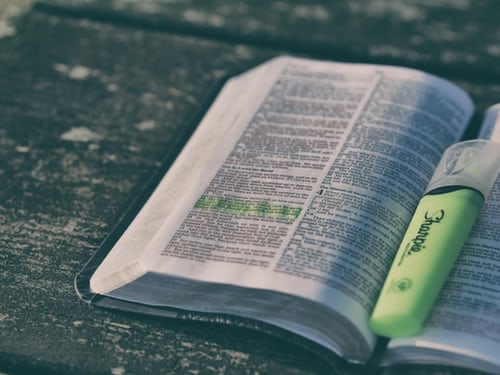What's in a Word?
Nine terms to help define and describe the science and structure of how words are formed.

While you welcome September with open, slightly chillier arms, back-to-school buzz rivals the hum of bees. A new academic year is equal parts transition and awareness: students need time to find their footing, but it's important to be proactive and persistent with learning struggles.
These nine terms shed light on the structure and sounds of words. Understanding the science behind phonetic practices—and gaining the ability to decode—helps nurture a fundamental formula: information + implementation = comprehension.
(We really like math, too!)
SYLLABLE [si·lə·bəl]
A whole or part of a word consisting of one vowel sound alongside one or more consonants; often thought of as a word's "beat." For example, remember has three syllables: /re/ + /mem/ + /ber/. The word chop has only one syllable; its single vowel sound /_o_/ is surrounded by the consonant sounds /ch/ and /p/.
PHONICS [fŏn·ĭks]
A teaching method for reading that focuses on correlating letters with phonetic sounds or values; the ability to hear, distinguish, and apply phonemes.
PHONEME [fō·nēm]
The smallest unit of sound that is combined to make words. The English language has only 26 letters but 44 phonemes, which can share the same sound function. For example, /k/ and /c/ (kite and cord), and the consonant /c/ also makes an /s/ sound (city).
GRAPHEME [gra·fēm]
A letter or group of letters (and all of its sound possibilities) that merge phonemes. For example, /m/, /sh/, and /tch/ (my, rush, and watch). Graphemes can also be represented differently but make the same sound (comb, machine, and future).
DIGRAPH [dī·ɡraf]
Two letters that make a single sound. Consonant digraphs include /ph/, /mb/, and /sh/ (phone, lamb, and shop); vowel digraphs include /ay/, /ow/, and /er/ (day, cow, and her).
TRIGRAPH [trī·ɡraf]
Three letters that makes a single sound. For example, /igh/, /dge/, and /tch/ (sight, fudge, and witch).
DIPHTHONG [dif·thäng]
A vowel sound created by combining two vowels. For example, /i_e/, /oa/, and /ee/ (nine, boat, and peek).
MORPHEME [môr·fēm]
The smallest meaningful unit in language. Different from a word, which can always stand alone, morphemes are either bound (cannot stand alone) or free (can stand alone). Bound examples include /-un/ (untie); /-ly/ (quickly); and /s/ (cats). Free morphemes include words that, when combined with other words, create new ones but itself cannot be further divided. Examples include "dog" (doghouse); "book" (notebook); and "pick" (toothpick).
ALLOMORPH [al·ə·môrf]
A combination of two or more morphs that transform into a morpheme. For example, the plural morpheme /s/ has three or more allomorphs, including: /s/ (cats); /z/ (dogs); and /iz/ (pushes).
Feeling definition dizzy? We get it! Contact us to discuss our practices, programming, and purpose—and to see if Halifax Learning is right for you, your child, or a family member.
In the meantime, peruse our active research on SpellRead's success while building your own vocabulary with Merriam-Webster's Word of the Day!
Doesn't language totally coruscate?